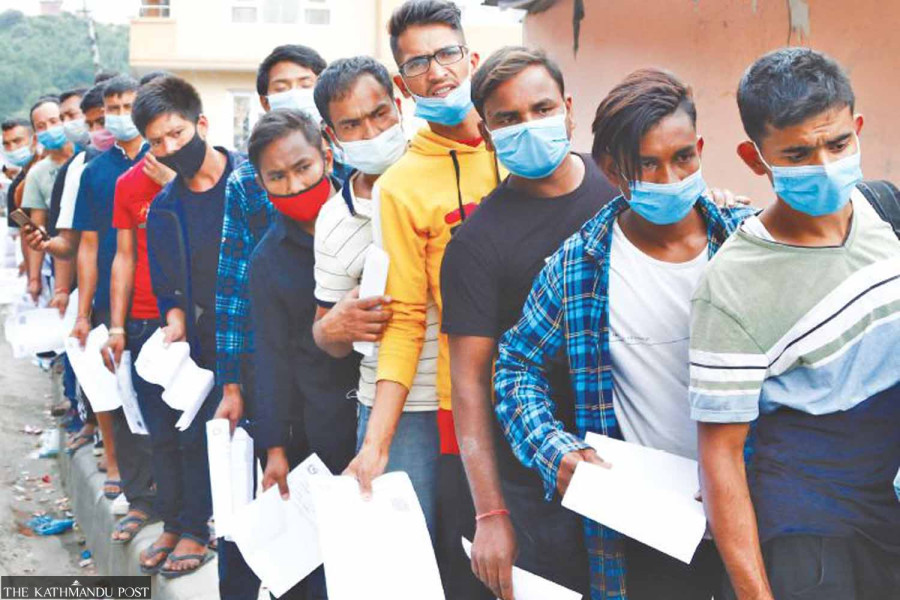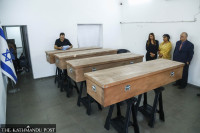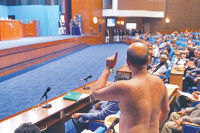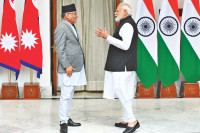Special Supplement
Yearender 2022: More Nepalis leave for foreign jobs in 2022
In the last fiscal year ended mid-July, daily departures averaged 1,726, a five-year high.
Pawan Pandey
When the then prime minister KP Sharma Oli formally launched his highly ambitious Prime Minister Employment Programme around three and a half years ago, he had said that Nepali citizens would not be compelled to go abroad for jobs anymore. Around 1,400 migrant workers were leaving Nepal daily when Oli made that promise. Paradoxically, in the last fiscal year ended mid-July, daily departures averaged 1,726, a five-year high.
Thousands of Nepali migrants returned home and thousands were unable to go abroad during the pandemic, but departures began to surge immediately after labour destinations lifted Covid-19 restrictions. Official statistics show that 347,340 new and re-entry labour permits were issued in the first five months of the current fiscal year ended mid-December, which works out to an average of 2,315 daily. If this speed keeps up, the figure will cross 1 million by mid-July next year, industry insiders say. One of the highlights of 2022 is that migrant departures turned into an exodus.
Along with record high departures of migrant workers, the inflow of remittance too saw a new peak this year, crossing the Rs1-trillion mark for the first time. Remittance became, once again, the lifeline of the country desperately struggling to stop the depletion of foreign exchange reserves which compelled the government to impose an import ban on some “luxury” goods.
Though a recently published World Bank report has estimated that remittance to Nepal could surpass pre-pandemic levels and increase by 3.6 percent to $8.5 billion in 2022, up from $8.2 billion in 2021, it has also projected remittance to decline by 5 percent with the completion of FIFA World Cup-related construction projects.
The World Cup 2022 hosted by Qatar, one of the major labour destinations for Nepalis, remained controversial for its negligent attitude towards the plight of migrant workers who spent a decade building the infrastructure for the global extravaganza. Though the poor living and working conditions of migrant workers, especially from South Asia and Africa, and labour rights violations made international headlines every year since Qatar won the right to host the championship in December 2010, the steps taken by FIFA and Qatar were not adequate to eliminate their hardships, migrant rights activists say.
A number of investigations by human rights and migrant rights groups exposed the exploitation faced by the workers time and again, but the authorities concerned, instead of acknowledging them, rejected the findings. The Gulf country also rejected the demand of international human rights and migrant rights organisations to set up a compensation fund, equivalent to the World Cup’s prize money of $440 million, for the workers who died or sustained injuries working in World Cup-related projects.
Qatar Labour Minister Ali bin Samikh Al Marri told Agence France-Presse, a Paris-based international news agency, that the demand was a "publicity stunt". Around three dozen human rights organisations in December wrote to Gianni Infantino, president of the global footballing body FIFA, the World Cup organiser, to take initiatives to ensure compensation for the workers.
Hundreds of Nepalis have faced deportation, injuries and deaths in Qatar. In the three fiscal years 2019-20 to 2021-22, there were 595 documented deaths of Nepali workers in Qatar. But more Nepalis have died in Saudi Arabia and Malaysia in the past three years. The greatest number of migrant deaths in the past three years, 870, occurred in Saudi Arabia among the dozen or so most popular labour destinations among Nepali workers. According to the report, 817 Nepali workers died in Malaysia and 496 in the United Arab Emirates during the same period.
From 2008-09 to 2021-22, a total of 10,666 Nepalis have died in labour destinations, according to the Nepal Labour Migration Report 2022. Migrant deaths have raised concern as the figure has been rising steeply in the past three years. The number increased from 658 in 2019-20 to 1,146 in 2020-21.
In the last fiscal year, the number of deaths reached an all-time high of 1,395. The actual figure could be higher as many migrant deaths go undocumented, observers said. Heart attack, cardiac arrest and natural death have been cited as the major causes of death among Nepalis in the Gulf countries and Malaysia. Hundreds of young, healthy Nepalis have suffered sudden deaths in foreign lands. Though such deaths are often termed as "natural deaths", rights activists say that healthy men in their prime of life, without any major health conditions prior to their departure, suffering cardiac arrest does not constitute "natural death".
“The World Cup was an opportunity to increase the pressure on Qatar to compensate the workers for their rights violation when everybody’s attention was directed towards the country,” said Rameshwar Nepal, executive director of Equidem Research Nepal, a human rights and labour rights research organisation. “While international media outlets continuously raised the issues, the Nepali authorities as well as most of the media outlets failed to speak on behalf of the workers.”
Nepal fears the Qatari authorities could be more suppressive towards the workers in the coming days.
“They did not listen to any international organisation even during the World Cup” Nepal said. “They might have gained more confidence to continue treating the migrant workers in the same way. That’s why there is a need to raise the issue of workers even more loudly in the coming days.”
The government this year brought some new guidelines regarding the reintegration of returnee migrant workers, inclusion of migrant and informal sector workers and self-employed individuals in the contribution-based Social Security Scheme. But labour migration experts doubt there will be effective implementation and impact.
While the government seemed focused on theoretical aspects, practical issues such as the hassles one has to go through while getting passports and effective mechanisms for monitoring recruitment agencies remained unaddressed this year as well, according to Meena Poudel, a migration researcher.
“Instead of addressing human rights violation issues in the labour migration process, Nepal’s labour migration policy, as always, remained focused on sending even more migrant workers to receive more remittance this year,” said Poudel. “Nothing substantial, practical or pragmatic regarding policy or structural change happened this year in the foreign employment sector in the country.”
Though Poudel said an increase in discussions on various aspects of labour migration was a constructive development that happened this year, she maintained that all the political parties have been indifferent to the management of the foreign employment sector for the maximum benefit of the community and the country.
Some well known political figures, instead, tried to lure voters during the federal and Provincial Assembly elections by offering to help them migrate for employment. The Election Commission sought a written clarification from Madhav Kumar Nepal, chairman of the CPN (Unified Socialist) after he was caught on video offering free jobs abroad while addressing an election rally in his hometown in Rautahat district, but no further action was taken.
Policy discussion regarding foreign employment has been limited to the federal level despite the three tiers of government in the country. While the local level election was held on May 13, the federal and provincial elections were held on November 20.
“We have an opportunity to formulate an integrated migration policy for bringing reforms in the labour migration sector as well as to make it more systematic,” said Poudel.
An integrated migration policy means foreign policy, economic policy, trafficking-related policy, foreign employment policy and immigration law all working together with the common goal of benefiting migrant workers, experts said.
While countries like Croatia, Cyprus, the Maldives, Malta, Poland, Romania, Turkey and the United Kingdom have emerged as new labour destinations in recent years, the six Gulf Cooperation Council countries–the United Arab Emirates, Qatar, Kuwait, Bahrain, Saudi Arabia and Oman–and Malaysia are still the most preferred destinations for Nepalis.
The concerns of thousands of Nepali workers who go to India for jobs and women migrant workers too remained unaddressed this year.
After more than three years of imposing a ban on Nepali women from taking up domestic jobs in the Gulf countries, the parliamentary Commerce, Labour and Consumer Welfare Committee in 2020 directed the government to allow them to work as domestic help in those countries.
However, the House committee laid down seven conditions which labour migration researchers say are impractical.
“The barriers and restrictions for women migrants need to be removed. The government should create a facilitating mechanism to help them use formal channels for labour migration to minimise the exploitation they are subjected to while adopting informal channels,” Poudel said.
"Nepali authorities need to raise the issue of gender-based violence at international platforms such as Colombo Process and Abu Dhabi dialogue too,” Poudel said.




 17.12°C Kathmandu
17.12°C Kathmandu










